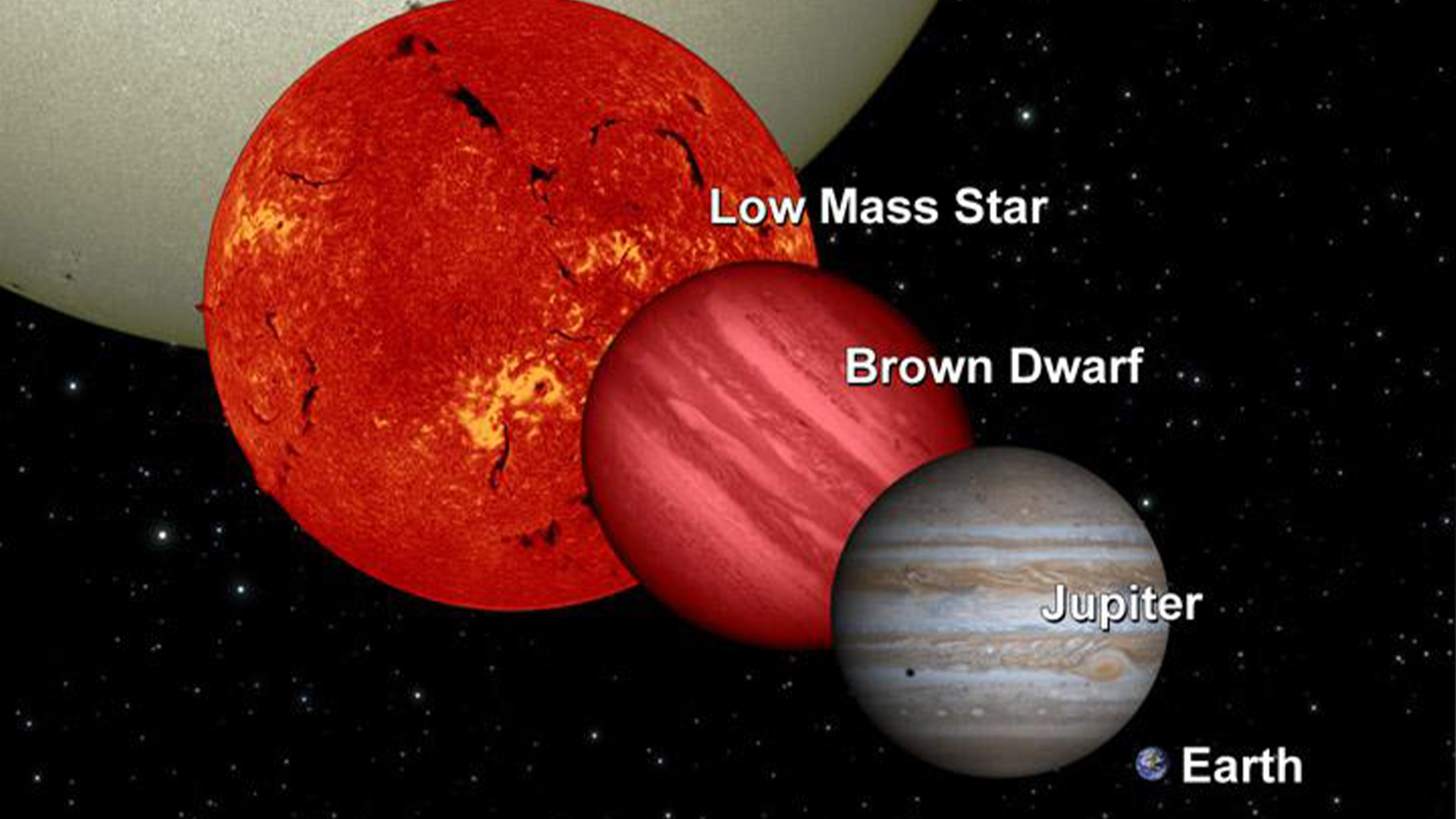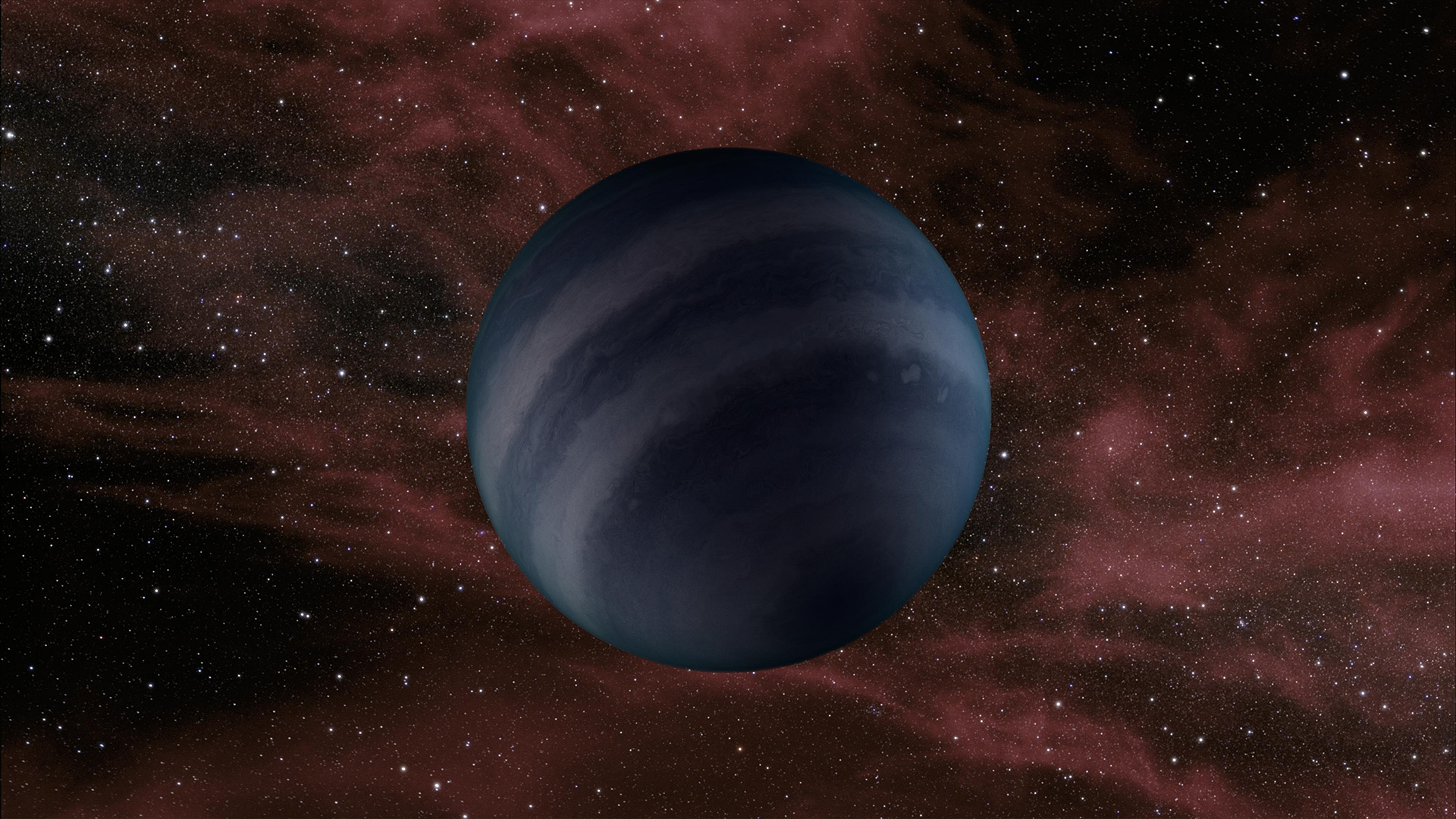
(Image credit: NASA)
In between the tiniest stars and the most huge worlds, a weird class of celestial items pervades deep space. Called brown overshadows, or “stopped working stars,” these liminal items are more huge than gas giants such as Jupiter however less enormous than the tiniest stars.
They’re likewise truly typical: Astronomers just recently found that there might be as lots of as 100 billion of these faintly radiant bodies spread throughout the Milky Way. With price quotes of the Milky Way’s outstanding population varying from 100 billion to 400 billion, that implies brown overshadows might be nearly as typical as stars themselves.
Why do brown overshadows stop working to end up being stars?
Related: Mystical item called ‘The Accident’ has actually been careening through the Milky Way for 10 billion years

Why do brown overshadows “stop working”?
The brief response is that brown overshadows do not have sufficient mass to set off the consistent nuclear combination of hydrogen.
Both stars and brown overshadows are born when huge clouds of gas and dust collapse. These “protostars” continue to collect product from these clouds till they reach masses at which the internal pressure and temperature level are substantial sufficient to set off hydrogen burning, merging hydrogen atoms to produce helium.
“For what identifies a star and brown dwarf, it returns to the reality that low mass stars (M overshadows) have steady hydrogen combination, and the tiniest of these will have blend for trillions of years– longer than the existing age of deep space,” Nolan Grievesa postdoctoral scientist in the Department of Astronomy at the University of Geneva, informed Live Science by means of e-mail. “Whereas high mass brown overshadows do not attain steady blend over the long term.”
That does not imply brown overshadows do not burn hydrogen at all.
“Interestingly, some brown overshadows will end up being hot adequate to begin hydrogen blend, however they can not stabilize nuclear burning in their core with photon losses at their surface area,” he stated. “So their core temperature level ultimately falls listed below the hydrogen burning limitation.”
If brown overshadows can’t be thought about stars, would not it simply be simpler to categorize them as extremely huge worlds? That does not truly work either.

Why aren’t brown overshadows thought about worlds?
Despite the fact that a brown dwarf can’t attain steady hydrogen blend, that does not suggest it is incapable of sustaining any type of nuclear blend at its core.
The dividing line in between brown overshadows and gas giant worlds is normally thought about someplace in between 10 and 14 times the mass of the planetary system’s most enormous world, Jupiter. That implies we should not discover a world with more than around 13 times the mass of Jupiter
Related: Strange ‘stopped working star’ the size of Jupiter is 2,000 degrees hotter than the sun
This is because, at this mass, heavenly bodies can setting off the constant nuclear burning of deuterium, a “heavy” type of hydrogen. Instead of having a nucleus of simply one proton as does “basic” hydrogen– deep space’s lightest aspect– deuterium has a nucleus of one favorably charged proton and a non-charged neutron. This is the factor brown overshadows can have a faint radiance.
“The significant distinction in between brown overshadows and worlds is their mass and the incident of deuterium burning,” Grieves stated. “At bigger masses, an item will have a high sufficient internal pressure and temperature level to burn a bulk of the deuterium that was at first present in the things.”
The dividing line has actually been set so brown overshadows are categorized as items that burned 50% or more of their preliminary deuterium. That line is blurred, due to the fact that other attributes beyond mass– like the portion of helium in a celestial body– might result in the burning of deuterium.
In the future, Grieves stated, it may be possible for the distinction in between worlds and brown overshadows to be redefined: Brown overshadows might be classified as celestial items that are not stars however are developed when a cloud of gas and dust collapses, whereas worlds might be specified as overdense blobs that form in a disk of protoplanetary product around a collapsed star.
Till then, these remarkable celestial things might need to exist with the recommendation of “failure.”
Why do some stars stop working to fire up? posted first on https://www.twoler.com/
No comments:
Post a Comment